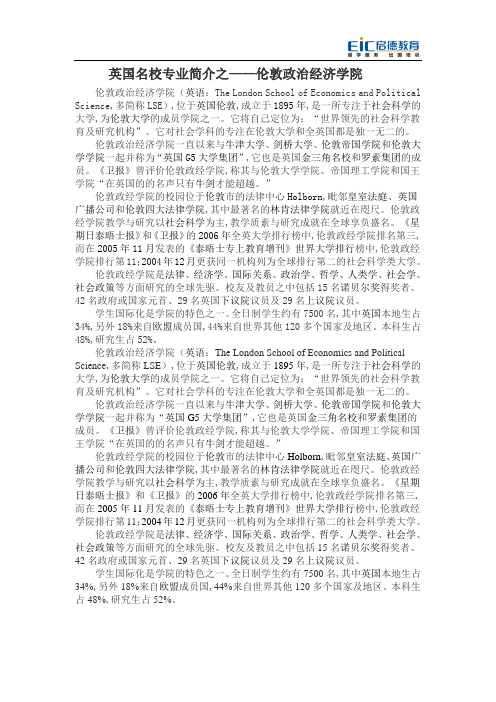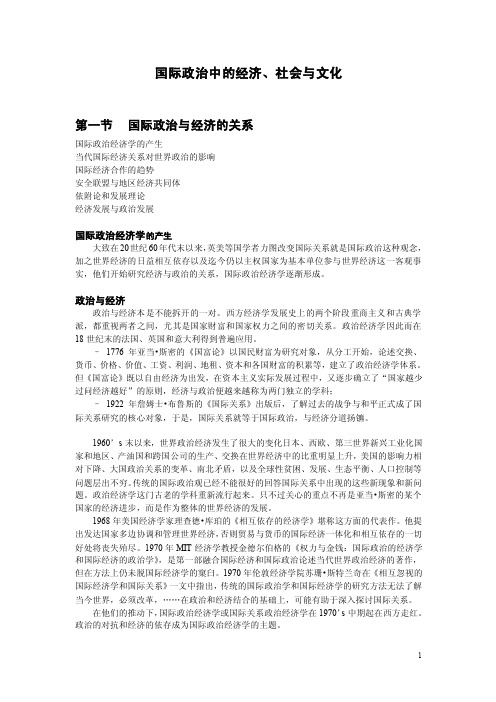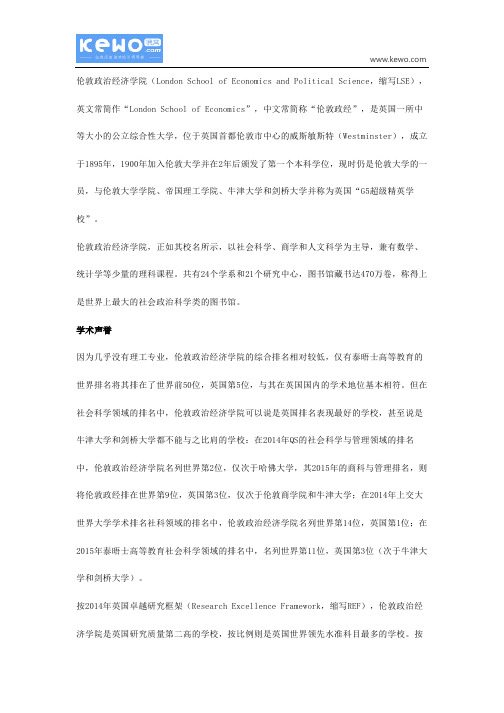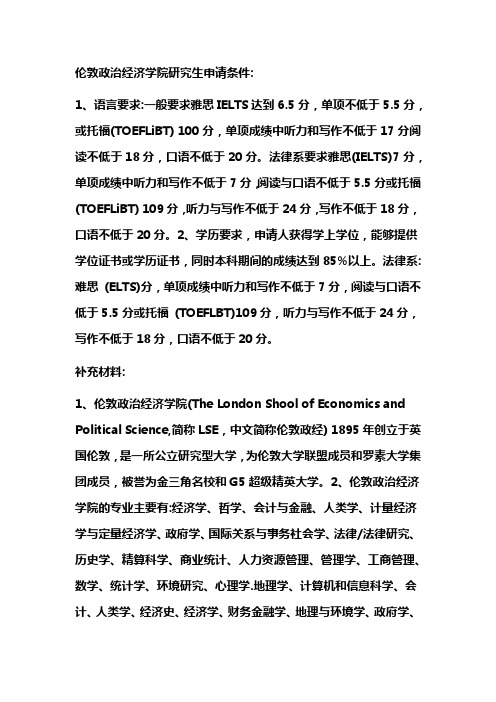欧盟经济,社会与政策讲义--伦敦经济学院
欧盟介绍-演讲PPT

欧盟与中国的合作前景
加强贸易合作
欧盟与中国应加强贸易合作, 推动双边贸易额的增长。
深化投资合作
双方应加强投资合作,鼓励企 业互利合作,实现共同发展。
加强创新合作
欧盟与中国应加强在科技创新 领域的合作,共同推动全球科 技进步。
加强人文交流
双方应加强文化、教育、旅游 等领域的人文交流,增进相互
了解与友谊。
欧盟的社会保障和福利政策
社会保障制度的协调
欧盟推动成员国社会保障制度的协调和整合,以确保劳动者在欧 盟范围内的流动不受社会保障障碍。
福利政策的合作
欧盟在福利政策方面开展合作,共同应对社会挑战,如老龄化、 贫困和社会排斥等。
促进就业和职业培训
欧盟通过就业政策和职业培训项目,支持成员国提高劳动力的就 业能力和职业素质。
欧盟介绍-演讲
目录 CONTENT
• 欧盟简介 • 欧盟成员国 • 欧盟的经济一体化 • 欧盟的政治一体化 • 欧盟的社会和文化一体化 • 欧盟的未来发展
01
欧盟简介
欧盟的起源和历史
01
02
03
欧洲一体化进程
从煤钢共同体到欧洲共同 体,再到欧盟的演变,反 映了欧洲各国寻求和平与 合作的历史进程。
05
欧盟的社会和文化一体化
欧盟的教育和文化政策
促进教育交流
欧盟通过伊拉斯谟计划等项目,支持学生、教师和学者在成员国之 间进行交流,促进文化理解和学术合作。
语言多样性
欧盟尊重并保护其成员国的语言多样性,推动语言学习和跨文化交 流,以促进相互理解和尊重。
文化遗产保护
欧盟支持成员国在文化遗产保护方面的合作,通过欧洲文化遗产日等 活动,提高公众对文化遗产价值的认识和保护意识。
乌尔里希 贝克的主要著作

德意志译丛:德国的欧洲
《德意志译丛:德国的欧洲》是2014年4月同济大学出版社出版的图 书,作者是[德]乌尔里希·贝克。
“德国的欧洲”中的“欧洲的德国”,我们似乎目前就在经历这么一 种微妙的变体。
在德意志历史上,这是迄今为止最出色的德国。但偏偏此时,欧洲却 陷入了危机。这不仅仅是一场经济危机,更是一场社会和政治危机。这次 危机让德国一跃成为整个欧洲的教师爷,稳定的德国模式悄然成为了整个 欧洲的指导思想。
全球化时代的权力与反权力
《全球化时代的权力与反权力》是广西师范大学出版社出版的图书, 作者是(德)贝克。
麦克尔·哈特在《帝国》中宣言全球化使民族国家的主权不可逆转地 衰落了,形成了一种新的全球规则和全球结构--“帝国”;几乎同时, 德国社会学家乌尔里希·贝克也论证了民族国家需要转型的事实,并提出 了主导全球化时代权力游戏规则的“世界主义国家”这一新的主权概念。 本书是乌尔里希·贝克的一部新作。作者在书中以独特的视角论述了第一 次现代化向第二次现代化的转型问题,审视了世界经济、国家和公民社会 运动之间的全球性权力游戏,分析了民族国家的传统观念在全球化时代遇 到的矛盾和挑战,提出了如何打破民族国家模式,在世界主义视角下发展 国家概念和国家理论的问题。贝克认为,民族国家是未完成的国家,将被 世界主义国家所取代。
《世界主义的欧洲:第二次现代性的社会与政治》在分析当今欧洲社 会面临的矛盾、风险韵基础上,构想了欧洲的世界主义化战略。
乌尔里希·贝克(U1r1Ch Beck):慕尼黑大学社会学教授,兼任英国 伦敦经济学院客座教授。主要著作有:《风险社会:走向另一种现代性》 (1986)、《风险社会的政治》(1991)、《政治的发明,论反思现代化 的方法》(1993)、《自由之子》(1997)、《全球化时代的权力与反权力》 (2002)、《词语的沉默论恐怖与战争》(2002)、《世界主义的欧洲:第 二次现代性的社会与政治》(2004)、《世界主义:相互依存的政治》 (2005)、《世界风险社会--寻找失去的安全》(2007)等。
英国名校专业简介之——伦敦政治经济学院

英国名校专业简介之——伦敦政治经济学院伦敦政治经济学院(英语:The London School of Economics and Political Science,多简称LSE),位于英国伦敦,成立于1895年,是一所专注于社会科学的大学,为伦敦大学的成员学院之一。
它将自己定位为:“世界领先的社会科学教育及研究机构”。
它对社会学科的专注在伦敦大学和全英国都是独一无二的。
伦敦政治经济学院一直以来与牛津大学、剑桥大学、伦敦帝国学院和伦敦大学学院一起并称为“英国G5大学集团”,它也是英国金三角名校和罗素集团的成员。
《卫报》曾评价伦敦政经学院,称其与伦敦大学学院、帝国理工学院和国王学院“在英国的的名声只有牛剑才能超越。
”伦敦政经学院的校园位于伦敦市的法律中心Holborn,毗邻皇室法庭、英国广播公司和伦敦四大法律学院,其中最著名的林肯法律学院就近在咫尺。
伦敦政经学院教学与研究以社会科学为主,教学质素与研究成就在全球享负盛名。
《星期日泰晤士报》和《卫报》的2006年全英大学排行榜中,伦敦政经学院排名第三,而在2005年11月发表的《泰晤士专上教育增刊》世界大学排行榜中,伦敦政经学院排行第11;2004年12月更获同一机构列为全球排行第二的社会科学类大学。
伦敦政经学院是法律、经济学、国际关系、政治学、哲学、人类学、社会学、社会政策等方面研究的全球先驱。
校友及教员之中包括15名诺贝尔奖得奖者、42名政府或国家元首、29名英国下议院议员及29名上议院议员。
学生国际化是学院的特色之一。
全日制学生约有7500名,其中英国本地生占34%,另外18%来自欧盟成员国,44%来自世界其他120多个国家及地区。
本科生占48%,研究生占52%。
伦敦政治经济学院(英语:The London School of Economics and Political Science,多简称LSE),位于英国伦敦,成立于1895年,是一所专注于社会科学的大学,为伦敦大学的成员学院之一。
英国经济学——精选推荐

三.英国经济学一、重商主义时期的经济思想与古典理论重商主义产生于十五世纪,是反映商业资本利益的一种经济观点和经济政策。
重商主义的发展大致经历了两个阶段:早期重商主义和晚期重商主义。
英国早期重商主义的代表是署名为W·S的小册子《对我国同胞某些控诉的评述》的作者,此书于1581年出版,该作者反对铸造成色和重量不足的货币,认为这会引起国内商品价格上涨,使足值货币流向国外。
英国晚期重商主义的代表是托马斯·孟。
他的代表作是他身后于1664年出版的《英国得自对外贸易的财富》一书,托马斯·孟是贸易平衡论的创始人。
他认为,对外贸易才是国家致富的手段。
在贸易关系中,重要的不在于把货币保藏起来而是将其投入有利可图的流通。
英国古典经济学的创造者威廉·配第的经济思想。
英国古典经济学是资本主义上升时期代表新兴资产阶级利益和要求的经济学。
英国古典经济学的产生时期包括十七世纪后半期和十八世纪的前半期。
威廉·配第是英国古典经济的奠基人。
配第的经济著作有:《赋税论》(1662年),《政治算术》(1690年),《献给英明人士》(1691年),《爱尔兰政治解剖》(1691年)和《货币略论》(1695年)。
配第在他的著作中提出了许多有价值的经济理论(1)价值论,威廉·配第是将劳动与价值结合考虑的第一人,首先提出劳动价值论。
(2)工资论,配第将工人工资归结为最低限度的生活资料。
在当时工资剥削极为残酷的状态下,能保证最好低生活资料的工资对工人阶级反而是很有利的,故能成为被广泛接受的工资理论。
(3)地租论,配第将地租归结为商品价格扣除成本以后的剩余,但未将利润包括在这一剩余之内,也未将这一剩余归结为雇佣工人的剩余劳动。
(4)货币和利息,配第第一次提出了货币流通速度概念。
配第的利息论对后人也有一定的影响,配第将利息看成一定时间内不能使用已让渡货币的报酬,将地租看作是利息得以存在的原因。
英国“脱欧”原因及其对中国经济的影响

英国“脱欧”原因及其对中国经济的影响位 青(山东师范大学 经济学院,山东 济南 250358)[摘 要]2016年6月英国举行全民公投,投票结果显示支持“脱欧”的票数以微弱优势战胜“留欧”票数,英国将退出欧盟,不再属于欧盟成员国。
这次公投不仅会改变欧盟整体的命运,也会影响中英乃至中欧关系,进而在多个方面对中国经济产生影响。
[关键词]英国脱欧;欧盟;中欧关系[DOI]10 13939/j cnki zgsc 2017 05 1941 引 言当今世界经济全球化是必然趋向,欧盟推进欧洲一体化的计划也一直备受关注,英国成功“脱欧”更是引起全世界的关注,这一“黑天鹅”事件将会对世界经济带来不可避免的影响。
2 英国“脱欧”原因2 1 财政负担英国每年需要向欧盟预算缴费,由于英国经济领先于欧元区整体,英国的预算贡献仅次于德国和法国,排在欧盟国家内第三位,这对英国经济增长形成了拖累。
金融危机后,欧元区一部分国家降低了贡献额,英国是欧盟的成员国,需要拿出大量资金援助其他成员国,导致英国贡献比例升高。
欧盟应对欧债危机的措施让英国人觉得欧盟拿着英国纳税人的钱去救济“问题国家”。
2 2 移民和就业欧盟东扩以后,英国净移民数量持续增长。
经济萧条下,移民是挤占福利、住房、医疗和教育资源的“罪魁祸首”。
目前,居住在英国的其他成员国国民大约有300万,其中有2/3在英国工作。
日益增加的移民人数使得英国人民愈发担心移民对就业与生活的影响,加重了英国退欧情绪。
2 3 难民问题和恐怖主义难民问题和恐怖主义也是英国的国民关注的重要问题之一。
面对当前复杂的政治经济环境,地缘政治危机、经济环境恶化以及地理因素等,欧盟的难民问题和恐怖主义矛盾继续凸显,使得本已脆弱和紧张的英国与欧盟的关系更加恶化。
2 4 政治压力和博弈政治压力。
在英欧关系上,2012年,81名下议院保守党议员投票赞成全民公投;11月,退欧派的英国独立党在递补选举中获取了仅次于工党的席位;提议英国进行退欧公投,有助于卡梅伦摆脱国内政治压力。
英国伦敦政治经济学院概况及录取要求

伦敦政治经济学院由Beatrice和Sidney Webb创立于1895年,1900年成为伦敦大学联盟的一员,现已开展成世界(shìjiè)上最优秀的社会科学大学之一,排名在哈佛、斯坦福大学附近。
伦敦政经学院与牛津大学、剑桥大学、帝国理工学院、伦敦大学学院并称“G5〞精英大学,它也是英国金三角名校和罗素大学集团成员。
学校(xuéxiào)简介:伦敦政治经济学院是一所将教学与科研集中在社会、政治和经济科学领域的顶尖学校,也是法律、经济学、国际关系、政治学、哲学、人类学、社会学、社会政策等方面(fāngmiàn)研究的全球先驱。
校友及教员之中包括16名诺贝尔奖得奖者,开展了最权威的经济理论,许多对全球政治、经济、社会开展有影响的思想、政治体系均源于该校。
学生国际化是学院的特色之一。
全日制学生约有9600名,其中(qízhōng)英国本地生占38%,另外18%来自欧盟成员国,44%来自世界其他120多个国家及地区,在伦敦政治经济学院的校园讲话的语言超过100种。
地理位置(dì lǐ wèi zhì):伦敦政经学院的校园位于伦敦市的法律中心Holborn,毗邻皇室法庭、英国播送公司和伦敦四大法律学院,界于West End和City之间,大英博物馆、伦敦大学总部、Senate House图书馆和小型专业图书馆都离该校不远。
其中最著名的林肯法律学院就近在咫尺。
间隔该校园不到一英里就是主要的政府、法律、金融和传媒中心所在地,这些机构才是该学院“真正〞的研究对象。
最近的地铁站位于Holborn和Temple。
建议每位在伦敦读书的学生办理一张Oyster Card,办卡是免费的,节省了很多费事而且可以省下不少钱。
比方,本来2英镑的车程只需90便士。
重点专业:社会、政治、经济科学录取要求:1、本科本科生申请条件开学时间:每年10月中旬申请截至日:每年1月15日IELTS分数要求:7分(单项7分)TOEFL分数要求:107分(单项25分)语言成绩略低于上述分数要求的学生,可以向学校申请Pre-sessional语言课程。
区域经济学(第三版)课件:国际区域经济

2024年11月14日星期四
国际区域经济
11
第一节 国际区域经济概述
形成区域化组织 消
间竞争加剧
极
作
用
形成对外壁垒, 导致国际竞争加 剧。
2024年11月14日星期四
国际区域经济
12
第一节 国际区域经济概述
四、区域经济一体化组织的发展趋势
第一,现存的区域经济组织的深化:如卫生、环境 标准。 第二,现存的区域经济组织的扩展 。 第三,订立新的区域贸易协定。
2024年11月14日星期四
国际区域经济
33
第三节 北美自由贸易区构建的区域经济
一、亚太经济合作组织概况
对拉美国家有重要的示范作用, 并促 进美国与拉美国家的双边或多边贸易 协定的谈判
2024年11月14日星期四
国际区域经济
34
第四节 亚太经济合作组织的区域经济特点
2024年11月14日星期四
概亚 况太
1994年
欧洲提出欧洲经济区 计划的倡议
1995年
东盟自由贸易区吸 收越南
2024年11月14日星期四
国际区域经济
15
第一节 国际区域经济概述
五、区域经济一体化与经济全球化的关系
区域经济一体化组织经 济利益的独享性和排他 性
区域经济一体化与经济 全球化是同时并存的两 种世界经济发展趋势 。
对立
区域经济一体化组织内部的经 济自由度的增强,意味着世界 经济整体变得更为自由与开放
区域经济学(第三版)
题重 点 问
国际区域经济
国际区域经济一体化 欧洲联盟的区域经济发展特点 北美自由贸易区的宗旨与政策框架 APEC的创新及其特点
国际区域经济
最新-欧盟经济的特点与形势 精品

欧盟经济的特点与形势一、相关研究文献综述欧盟经济模式的讨论可以上追至19世纪资本主义自由竞争时期。
当时,德国由于产业革命进行较晚,工业基础薄弱,敌不过英国工业品的强力竞争。
而经济学论坛上占主导地位的思潮是以英国斯密、李嘉图等古典经济学为主要内容的自由放任和自由贸易观点,德国学者李斯特从德国工业发展水平比较低的实际情况出发,指出了英国古典学派自由贸易观点具有世界主义的根本缺陷以及不重视各个特定国家的发展阶段和各自特殊利益的倾向,从而必然以世界范围的经济学来代替国家主义的经济学,为了给本国指明发展民族工业和取得权力的道路,李斯特用德国新兴资产阶级的民族主义来同英国资产阶级的世界主义相对抗,用德国的实际来同英国的理论相对抗。
由此初步形成了实行保护主张的德国经济发展模式和主张自由贸易的英国经济模式。
二战结束后,受马歇尔计划的推动,欧盟经济进入了平稳增长、社会和谐的30年黄金时期,1945年至1975年。
一般来说,政界和学界通过回顾欧盟经济成功发展历程,总结出了两种经济模式,即以德国、法国为代表的大陆模式和英国、爱尔兰为代表的盎格鲁模式。
[1]大陆模式在主张市场竞争的同时,强调有序竞争和社会责任,主张高税收高福利。
盎格鲁模式则主张实行自由市场经济,强调市场竞争,反对市场垄断,不主张国家过多干预企业和个人的经济活动。
或者说,两种经济模式回归到经济学的主题之一,即公平与效率孰为先的问题。
大陆模式更多地关注社会公平,而盎格鲁模式则更多地看重市场效率。
意大利学者、比利时学者é、英国金融时报经济评论员等西方学者对大陆模式又进行了具体细分,即大陆模式包括日耳曼模式、莱茵河流域模式和地中海模式[1][2][3]。
如果加上上述的盎格鲁模式,欧盟经济则可以划分为四种模式,即日耳曼模式、莱茵河流域模式、地中海模式和盎格鲁模式。
二、研究思路与方法2004年欧盟东扩后,如果作为一个整体国家来看,欧盟25国疆域面积为397万平方公里,列世界第七位;国内生产总值为127万亿美元,仅次于美国,占世界经济总量的21;欧盟拥有45亿人口,列世界第3位,占世界总人口的7。
国际政治中的经济、社会与文化

国际政治中的经济、社会与文化第一节国际政治与经济的关系国际政治经济学的产生当代国际经济关系对世界政治的影响国际经济合作的趋势安全联盟与地区经济共同体依附论和发展理论经济发展与政治发展国际政治经济学的产生大致在20世纪60年代末以来,英美等国学者力图改变国际关系就是国际政治这种观念,加之世界经济的日益相互依存以及迄今仍以主权国家为基本单位参与世界经济这一客观事实,他们开始研究经济与政治的关系,国际政治经济学逐渐形成。
政治与经济政治与经济本是不能拆开的一对。
西方经济学发展史上的两个阶段重商主义和古典学派,都重视两者之间,尤其是国家财富和国家权力之间的密切关系。
政治经济学因此而在18世纪末的法国、英国和意大利得到普遍应用。
–1776年亚当•斯密的《国富论》以国民财富为研究对象,从分工开始,论述交换、货币、价格、价值、工资、利润、地租、资本和各国财富的积累等,建立了政治经济学体系。
但《国富论》既以自由经济为出发,在资本主义实际发展过程中,又逐步确立了“国家越少过问经济越好”的原则,经济与政治便越来越称为两门独立的学科;–1922年詹姆士•布鲁斯的《国际关系》出版后,了解过去的战争与和平正式成了国际关系研究的核心对象,于是,国际关系就等于国际政治,与经济分道扬镳。
1960’s末以来,世界政治经济发生了很大的变化日本、西欧、第三世界新兴工业化国家和地区、产油国和跨国公司的生产、交换在世界经济中的比重明显上升,美国的影响力相对下降、大国政治关系的变革、南北矛盾,以及全球性贫困、发展、生态平衡、人口控制等问题层出不穷。
传统的国际政治观已经不能很好的回答国际关系中出现的这些新现象和新问题。
政治经济学这门古老的学科重新流行起来。
只不过关心的重点不再是亚当•斯密的某个国家的经济进步,而是作为整体的世界经济的发展。
1968年美国经济学家理查德•库珀的《相互依存的经济学》堪称这方面的代表作。
他提出发达国家多边协调和管理世界经济,否则贸易与货币的国际经济一体化和相互依存的一切好处将丧失殆尽。
伦敦政治经济学院介绍和申请说明

时间序列分析中心(Centre for the Analysis of Time Series (CATS))
本科申请
基本信息:
TOEFL要求
93学费/年
100
£17,040
申请截止日期 1月15日
IELTS要求
£12,0007.0 生活费/年
£14,400
开学时间
9月-10 月
高中平均分要求 -
申请费
Economics and Related Disciplines (STICERD))
金融市场研究中心(Financial Markets Group Research Centre (FMG))
格兰瑟姆研究所(Grantham Research Institute (GRI))
卫生与社会保健研究中心(LSE Health and Social Care)
国际史系(Department of International History)
国际关系系(Department of International Relations)
语言中心(Language Centre)
法学系(Department of Law)
管理系(Department of Management)
统计系(Department of Statistics)
研究机构
伦敦政治经济学院开设有以下21个研究中心(或研究所):
课窝教育 · 版权所有
-3-
亚洲研究中心(Asia Research Centre)
城市研究中心(LSE Cities)
气候变化经济与政策研究中心(ESRC Centre for Climate Change Economics and
西方发展模式弊病积重难返,政治理论范文.doc

西方发展模式弊病积重难返,政治理论-西方发展模式弊病积重难返:张茂荣(中国现代国际关系研究院世界经济研究所)一、欧洲“莱茵模式”困境欧洲的“莱茵模式”倡导无所不包的社会保障制度,导致社会福利支出过度,国家和企业负担过重,生活水平提高明显超出生产发展水平,一定程度上削弱了经济增长动力,阻碍经济发展。
且政府对市场干预过多,劳动力成本过高,失业率上升,人们参与经济活动的积极性下降,企业缺乏进取和创新精神,经济发展受到制约,从而不能形成具有充分自我持续能力的经济增长。
在全球金融危机面前,欧洲“莱茵模式”的高福利制度陷入严重困境。
华尔街金融海啸后,不少欧洲政客对美国次贷危机幸灾乐祸,认为这只是“盎格鲁-萨克逊模式”完全自由市场资本主义的重大失败。
更有人认为,这是美元没落、欧元上升和欧洲社会市场经济模式获得成功的标志性事件。
很多欧洲政客甚至建议拒绝美国关于联手拯救金融市场的请求。
然而,没高兴多久,欧盟即深陷“救市”漩涡。
这场发端于美国却硬着陆于欧洲的金融危机几近摧毁欧洲的金融体系并严重损害其实体经济,金融海啸后不到3个月,欧洲即陷入经济衰退深渊。
随着危机在欧洲的蔓延和深化,“力图将自由市场与社会团结和管制结合到一起的欧洲资本主义模式面临二战结束以来的最大考验”。
2008年10月8日,法国《世界报》刊文毫不留情地直指“莱茵模式”问题,指出:“20世纪的福利国家被证实不适应21世纪的世界,良性循环变成了恶性循环——增长无力令福利国家瘫痪,重新分配导致经济竞争力处于不利地位,同时削弱了增长。
”结果,希腊债务危机引爆欧洲主权债务危机,进一步暴露“莱茵模式”的深层问题。
过高的社会福利支出导致政府负担沉重,不得不靠借债度日,债务雪球越滚越大,加上经济金融危机导致税收减少,最终陷入主权债务危机泥潭。
与此同时,高福利使国民艰苦奋斗精神丧失,政府为克服债务危机而推出的财政紧缩计划遭遇强烈反对,并导致希腊、西班牙、意大利等国政权更迭。
第十四章 欧洲共同体及欧洲联盟经济史 《外国经济史》PPT课件

二、欧洲共同体的共同对外关税
关税同盟建立后,各成员国对从第三国进口 的商品 都征收同样关税。对同一商品依据 其出口国与共同体的不同关系采用不同税 率。这种区别对待的对外税制,包括:
(一)特惠税率
特惠税率是共同市场最优惠(低)的税率,适用 于原《雅温得协定》、《阿鲁沙协定》的 联系国,现在的《洛美协定》签字国。此外, 适用特惠税率的还有土耳其和未加入共同 体前的希腊以及阿尔及利亚、突尼斯、摩 洛哥、马耳他、塞浦路斯。所有这类优惠 贸易协定的受惠国,并不要求相应地给予共 同体九国以互惠待遇,一般只需给予“最惠国 待遇”。
市场和推行农业一体化的计划和政策。共 同农业政策通常与关税同盟一起并列为共 同体经济一体化的两大支柱,是共同体活动 中非常重要的内容。
共同农业政策采取了不同于工业品关税同 盟的方式,其主要内容和实施情况可大致归 纳如下:
(一)建立农业共同市场组织,实行统一的农产 品价格管理
(二)协调成员国的农业结构改革政策,提高农 业劳动生产率
非关税壁垒主要是指一些不是通过征收关 税,而是通过法律、政策等措施形成的限制 进口的贸易壁垒。
共同体成员国采用的非关税壁垒大致可归 纳为以下几种:
1.限制进口数量
2.不同的国内税收制度
3.不同的技术标准
第三节 共同农业政策
一、共同农业政策的主要内容 “共同农业政策”是欧洲共同体组织农业共同
《罗马条约》确定的共同体主要机构有:
1.部长理事会
2.执行委员会
3.议会
4.法院 三、欧洲共同体从六国扩展至十二国 (一)英国、爱尔兰、丹麦加入共同体 (二)希腊、葡萄牙、西班牙加入共同体
第二节 关税同盟
关税同盟是欧洲经济共同体的重要支柱。 它不仅是共同市场的基础,也是共同体经济 一体化的起点。
欧元对我国的影响论文

欧元对我国的影响论文从2002年1月1日起,欧元就将作为12个成员国的唯一合法货币正式进入市场流通领域。
事实上,欧元的影响范围将远远超出这12个成员国,仅欧元发挥直接决定性影响的国家和地区就约有40多个。
有些国家或地区已单方面宣布以欧元为法定货币,如欧洲的3个独立国家圣马力诺、梵蒂冈和摩纳哥以及安道尔和南联盟的科索沃与黑山共和国,还有涉及14个非洲国家的法非金融合作区将直接与欧元挂钩。
就欧元的影响程度而言,欧元诞生的意义也许在欧元刚启动之初尚未充分表达出来,但欧元的实际流通将会使其得到充分表达。
正如意大利前总理阿马托曾经说过的那样,欧元的价值只有在进入流通后才能定论。
欧元的启用是国际金融史上重要的一页,对中国贸易和金融的开展具有重要意义,亚洲需要研究借鉴,中国应该积极应对。
欧元启动与流通对中国贸易和金融的开展具有重要意义1999年,欧盟在里斯本承诺要使“欧洲经济成为世界上最具竞争力和最有实力的知识经济”,欧元的启用无疑是欧盟做出该承诺的最大信心保证。
欧元的启用对区内各经济体来说,其重要意义不言而喻;同样,欧元的诞生与流通对中国贸易金融开展也具有重要的意义。
欧元诞生后改变了国际货币体系,未来随着欧元的流通,将会形成国际货币构造格局中极其重要的一极欧元诞生后,迅速成为国际贸易、金融交易和官方外汇储藏中的一大主要货币,形成全球贸易结算货币和外汇储藏构造新格局。
例如中国大陆通过金融机构发生的国际收支交易结算货币中,2001年上半年欧元占的比重为2%.随着欧元正式进入流通领域,其所占的比重将会继续上升。
欧元诞生前国际商品贸易中有一半左右都是以美元结算,官方外汇储藏60%左右是美元,即使在去年,欧洲货币在国际外汇储藏构造中的比重还不到美元的一半。
但是,欧盟与区外的贸易量占世界的比重为20.9%,还稍微超过美国的19.6%的比重,仅去年欧元区11国(希腊尚未参加)的总贸易量就达40749亿美元,占世界的32.0%,是同期美国的两倍。
站在社会发展第一线——从伦敦经济学院看知名大学特色

0 B20 7/06
31
化 、经常化的检查 和评 估 。 能力的?”“ 欧盟统一市场背景 下的公 首先 ,L E自身具备 一整套保持 S 司职员政策如何 变革?” 官方信息对 教 研水平的评价 与检 查制度 : “ 控 制全球 流 行性 传染 病 的影 响有 多
关 于新 课程 与新 研 究项 目的提 议和规划由所属院系提 出后 , 还要经
了 L E的学术地位 。 S 职 教职 工 1 0 7 0名左右 ,其 中4 %是 4 或者研究成果 ,也即 “ 习 +研究 ” 学 学中 占居最 高比例 。 0 1 2 0 年评估结果
较宽松灵活 。 一般而言 , 学生每 学年
来 自 国之外的国家 , 英 有着截 然不同 的政治倾向与学科背景 , 同时 , 学生 也是来 自世界 的四面八 方 , 各有不 同
是 L E的一贯主张 。 S
独树一帜 的质 量保障
L E现有 1 系科 ,其中不少 S 8个 学科起步 早 、发展快 、水平高 。如 , 人 类 学 、国际 关 系 与社 会 政 策 等 。 LE S 保持教研俱佳 的关键就 在于 制度
L E附近就是英 国政 府 、法律 、 S 金融和传媒 中心的所在地 , 这些机构 对象 。正 因如 此 ,L E S 参与政府决策
文 /崔 晓 敏
伦敦经济学院 , 又译 作伦敦政治 与经济学院 ( 简称 L E)是一所在社 S ,
的文化经历 ,持思维方式 。 写及 课程 作业在 L SE学生 的时 间安 对于 L E S 来说 , 持久、深入地参 排 中 占居主位 。
会科学领域享誉全球的知名学府 , 教 与英国 、 欧盟 乃至整个国际社会 的实 研俱佳 、特色 鲜明 。创 建于 1 世纪 际运作 ,是其保持 国际领先学术地位 9 末的伦敦经济学院 以 “ 追求平等 、 改 的良方。L E S 扎根实践 的研究从以下 造社会”为宗 旨, 不仅研究英 国和欧 课题中可见一斑 ,比如 ,“ 通过什么途 盟的社会 、 政治与经济 问题 , 而且还 径可以脱贫? 为什么—部分 ^ 脱贫 了, 涵盖 其他大陆 的各 个国家 。“ 以现 实 而另外一些人却仍旧贫 困? ” 家庭结 “ 观照理论 ,不 断修正对社会 的看法 ” 构的变化是怎样影响人们参 与社会 的
伦敦政治经济学院研究生申请条件

伦敦政治经济学院研究生申请条件:
1、语言要求:一般要求雅思IELTS达到6.5分,单项不低于5.5分,或托福(TOEFLiBT) 100分,单项成绩中听力和写作不低于17分阅读不低于18分,口语不低于20分。
法律系要求雅思(IELTS)7分,单项成绩中听力和写作不低于7分,阅读与口语不低于5.5分或托福(TOEFLiBT) 109分,听力与写作不低于24分,写作不低于18分,口语不低于20分。
2、学历要求,申请人获得学上学位,能够提供学位证书或学历证书,同时本科期间的成绩达到85%以上。
法律系:难思(ELTS)分,单项成绩中听力和写作不低于7分,阅读与口语不低于5.5分或托福(TOEFLBT)109分,听力与写作不低于24分,写作不低于18分,口语不低于20分。
补充材料:
1、伦敦政治经济学院(The London Shool of Economics and Political Science,简称LSE,中文简称伦敦政经) 1895年创立于英国伦敦,是一所公立研究型大学,为伦敦大学联盟成员和罗素大学集团成员,被誉为金三角名校和G5超级精英大学。
2、伦敦政治经济学院的专业主要有:经济学、哲学、会计与金融、人类学、计量经济学与定量经济学、政府学、国际关系与事务社会学、法律/法律研究、历史学、精算科学、商业统计、人力资源管理、管理学、工商管理、数学、统计学、环境研究、心理学.地理学、计算机和信息科学、会计、人类学、经济史、经济学、财务金融学、地理与环境学、政府学、
国际历史、国际关系、法律学、管理学、数学、媒介和传播、方法学、哲学、逻辑和科学方法、社会政治学、社会心理学、社会学、统计学。
英国脱欧对世界经济的影响

3.英国退欧的影响
一、退欧导致的贸易冲击将会对英国的经济增长带来显著的负面影响
1.英国对欧盟贸易的依存度很高
2016年1月,英国在欧盟28的进口占其进口总值的53%,出口占其出口总值的47%。
英国在欧盟进出口占比
8
3.英国退欧的影响
2.负面影响 1)提高英国对欧盟进出口关税 2)提高英国与欧盟进出口贸易的非关税壁垒 3)提高英国和欧盟商品贸易价格 4)随着欧盟一体化程度的加深,英国将缺席一体化带来的利益
218.02 100307.06
3156.89 661.59 12513.00 7356.64 12681.37
48735.96 54811.10 90289.91 2084.29
941.96 152333.14
3916.43 1211.62 21500.37 11951.91 18990.27
19.43
英国的重要地位在于其实欧洲的银行
3
2.英国对欧盟的重要性——GDP占比
英国年度GDP占欧盟年度GDP的比重相对较高,2015年6月 占比达到最大值17.2
英国占欧盟GDP百分比
4
2.英国对欧盟的重要性——进口贸易占比
2008年金融危机之前,英国年度进口贸易总额占欧盟贸易总额之比一直保持在 10%以上,2002年的最高占比为12.7%。2008年受金融危机影响降至8.7%,之后震 荡上行至9.7%
2、对全球及新兴市场的经济影响相对温和
英国退欧会对金融市场和全球经济带来影响,但考虑到英国与欧盟关系的重构而 非割断,英国即使退欧也并不构成系统性的全球重大风险,全球经济不会因此陷 入衰退。从IMF的预测来看,全球经济受英国退欧的直接影响有限,在悲观情况下 也仅有-0.3%,负面主要集中在欧洲国家,而新兴市场受到的影响会更小。
欧盟区域经济政策的经验和借鉴

欧盟 区域经济政策 的经验和 借鉴
李 克歆
( 中国人 民银行 营业管理部 ,北京 104 ) 005
摘
要 :2 0 年 欧盟 完成 第 5次扩 大使 得 欧盟 成 员 国的 数 量增 长 至 2 04 5个 国家 , 由此 加 剧 了欧盟
内部 成 员国之 间的 经济 不平衡 性 。欧盟 的 区域政 策在 欧 盟诸 项 经 济和 社 会 政 策 中 占有 重要 地 位 , 成 为欧盟 财政 支 出的重要 方 面。作 为 解 决 区域 平 衡 发展 问题 的典 范 ,欧 盟 的 区域 政 策在 政 策 制
维普资讯
第3卷 第4 l 期 2 0 年 8月 08
石家庄经济学院学报
Junl f h i ha gU i r t o cnm c ora o ia un nv s y f o o i S jz e i E s
Vo _ 1 No 4 l3 . Au g.2 0 08
16 的 30 1 90年 .: 降低 至 19 的 16 1 97年 .: ,成 员 国之 间 的人均 收人 差距 大 幅度缩 小 。同时 ,不 同 目标地 区发 展 差 距 缩 小 。 18 9 8年 , 目标 1区域 中 人 均 国
官方 语 言 ,成 员 国范 围从 大 西洋 沿岸 一直延 伸到 东 欧地 区 ,甚至 申请 国 土耳 其 已经 到 了亚 洲 的 范 围 。 如何 协调 不 同经济 发展 水平 和文 化背 景 的地 区 和 国
是 20 04年 欧 盟 完成 第 5次 扩 大 ,接 纳 包 括 塞 浦 路 斯 、匈 牙 利 、捷 克 、爱 沙 尼 亚 、拉 脱 维 亚 、立 陶
宛 、马耳他 、波 兰 、斯洛 伐克 和斯 洛 文尼亚 在 内 的
发展型社会政策研究综述

二、发展型社会政策的概念阐释
最早的社会政策概念源于1873年成立的德国社会政策学会,德国经济学家瓦格纳把社会政策定义为“运用立法和行政的手段,调节财产所得和劳动所得之间分配不均的问题”。
第三,全球人口老龄化问题加剧。考夫曼在《福利国家所面临的挑战》一书中提到,人口老龄化问题给福利国家带来的负担,人口老化在资本流动加速、经济增长衰退时带来社会保障的负担率加重,有可能会导致社会保障制度的巨额赤字甚至破产。
这些变化都对福利国家原先的社会保护体系提出了新的要求,比如对非固定就业的职工如何保护,如何化解人口老化的危机等。这一切都迫使福利国家从观念到实践进行根本的变革。原来的福利国家纷纷做出了应对新风险的措施,重新探索新的社会政策理念,社会投资型国家的发展理念造就了发展型社会政策的产生。
(3)收入政策,即对工资和福利有直接影响的政策。
(4)政府通过社会保险影响收入保障,如退休金、医疗保险、失业保险等。
这些构成了发展型社会政策的内容。
五、发展型社会政策主要理论及实践策略
发展型社会政策又可称之为社会发展、发展性福利、社会投资、包容性自由主义和能动国家(enabling state)等,从目前的研究状况看,发展型社会政策尚未发展成为一种成熟的理论,其理论体系还需进一步建构和完善。
发展型社会政策的核心理论是将社会政策看成是一种社会投资行为,其基本依据是,社会政策对提高劳动力的素质有直接的作用,社会政策关系到国家的可持续发展。发展型社会政策特别注重对人力资本的投资和社会的发展。不同学者由于意识形态和价值取向千差万别,所以对于理论内容及其实现途径等方面的认识也不尽相同。但在社会政策与经济发展的关系上,发展型社会政策仍然有着共同的地方,那就是高度关注社会政策与经济发展的相互促进,注重社会政策的经济产出功能。在共识的前提下,发展型社会政策也显示了不同流派的特征,区分为产出主义(productivisim)、社会投资(social investment)和包容性发展(inclusive development)等三种形态。
- 1、下载文档前请自行甄别文档内容的完整性,平台不提供额外的编辑、内容补充、找答案等附加服务。
- 2、"仅部分预览"的文档,不可在线预览部分如存在完整性等问题,可反馈申请退款(可完整预览的文档不适用该条件!)。
- 3、如文档侵犯您的权益,请联系客服反馈,我们会尽快为您处理(人工客服工作时间:9:00-18:30)。
POLITY
by Andrés Rodríguez-Pose
London School of Economics
Oxford University Press ISBN 0-19-874286-X
Part I
ECONOMY
Main features
Period
Free trade area
Free trade among members From 1958 to the early
1960s
Customs union
Free trade with a common In theory from 1958, in
external tariff
monitor decisions adopted by member states
The stages of economic
integration (II)
• Economic union:
– Harmonisation of economic policies (generally monetary or fiscal policy)
Chapter 1
Competitiveness
The stages of economic
integration
• Free trade areas:
– Free trade between members, different external tariffs – Little or no institutional co-ordination
1.32
Spain
605.7
7.13
Sweden
248.8
2.93
United kingdom
1543.0
18.17
European Union
8493.0
100.00
United States
10738.7
126.44
Japan
5163.2
60.79
The limits of European competitiveness
Hale Waihona Puke GDP per capita (2000) in
Europe, the US and Japan
Country
Total GDP in % of the EU 2000 (billions economy
of €)
Austria
205.5
2.42
Belgium
244.0
2.87
Denmark
174.2
2.05
Finland
131.2
1.54
France
1399.2
16.47
Germany
2036.0
23.97
Greece
120.7
1.42
Ireland
101.1
1.19
Italy
1152.3
13.57
Luxembourg
19.9
0.23
Netherlands
399.1
4.70
Portugal
112.3
• Customs union:
– Free trade between members and common external trade restriction
– Common regulatory bodies
• Common (or single) markets:
– Removal of all barriers to free factor mobility – Free mobility of goods, capital, labour, and services – Greater level of regulation and strong institutions to
reality from the early 1960s
until 1993
Common market Free mobility of factors across 1993-1999
member states
Economic union Harmonization of economic Early stages in 1993.
policy
Partial economic union in
1999
Economic integration Completely unified economic Not yet achieved
policy
Economic integration to
achieve competitiveness
– Members give up powers. Strong central institutions which dictate common economic policy
• Complete economic integration:
– All economic policy areas are harmonised – The capacity of states to implement independent
– More sophisticated systems to dodge trade barriers (multinational corporations)
– Belief that market fragmentation (nationally divided markets) was reducing economies of scale
policies disappears – Central institutions become the centres of
economic decision-making
The stages of economic integration in the EU
Level of integration
• Why did a customs union (the EC) decide to increase the pace of economic integration during the 1980s and 1990s?
– Increasing globalisation of the world economy (increased competition, especially from the US, Japan, and the NICs)
